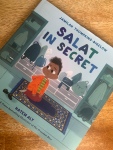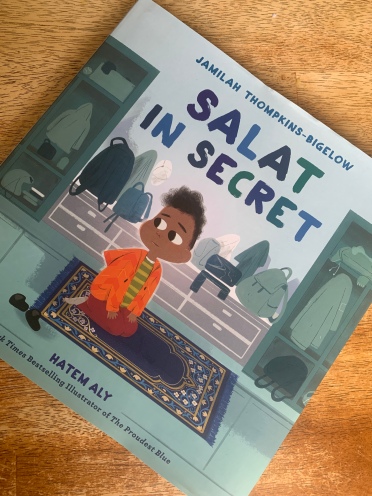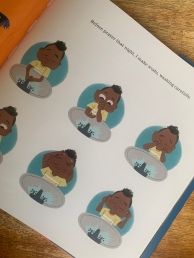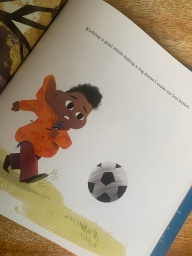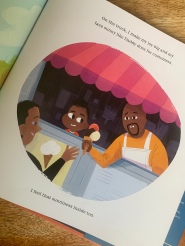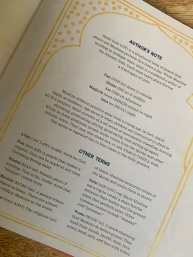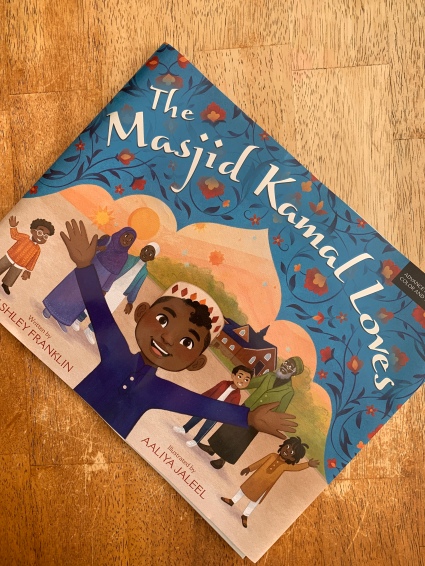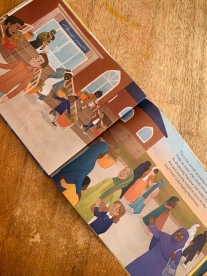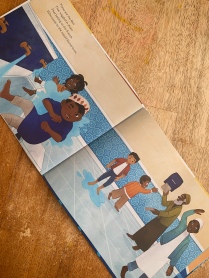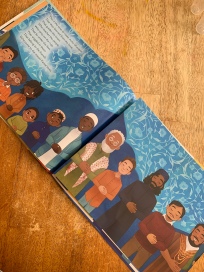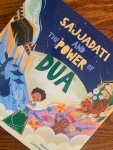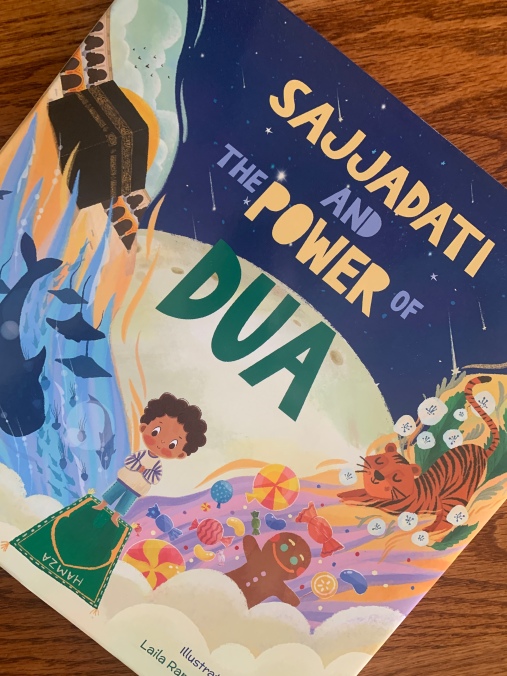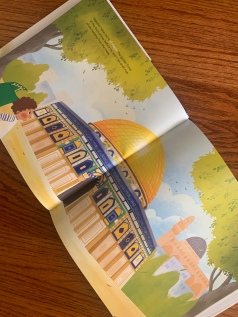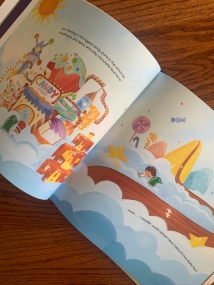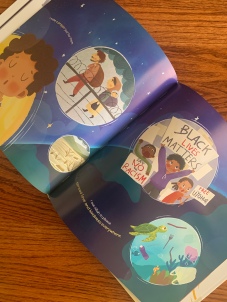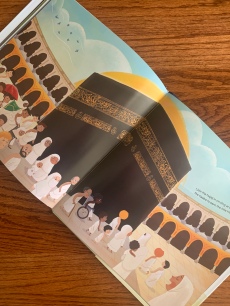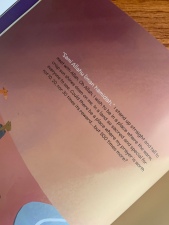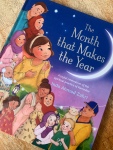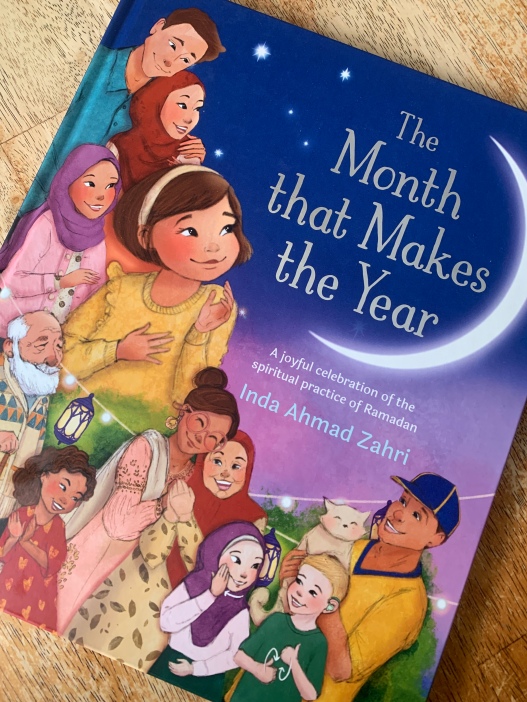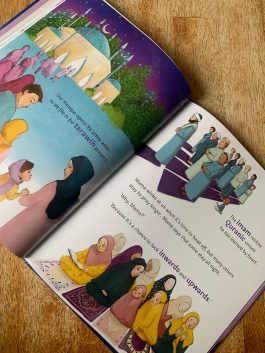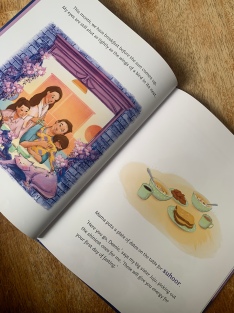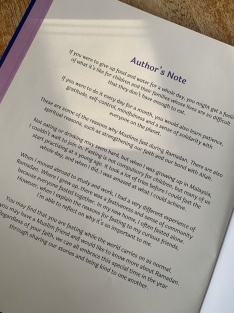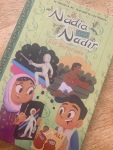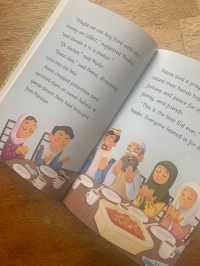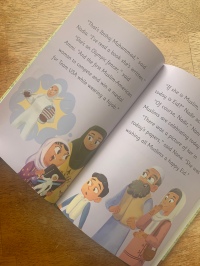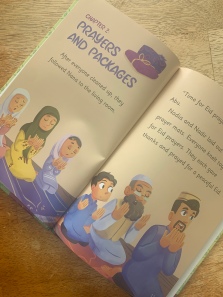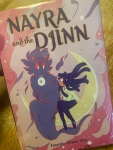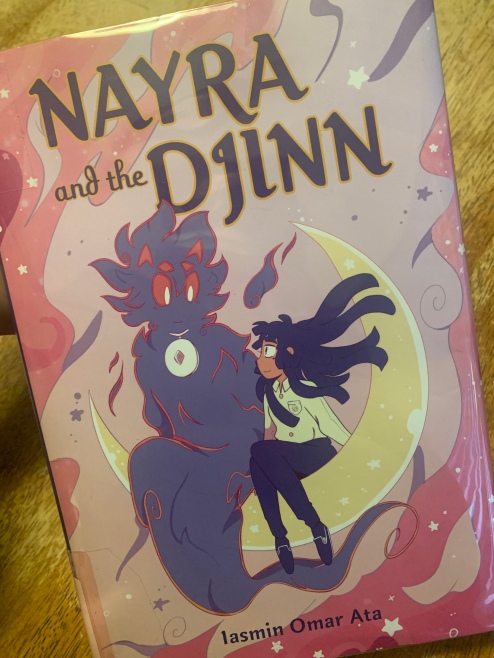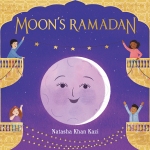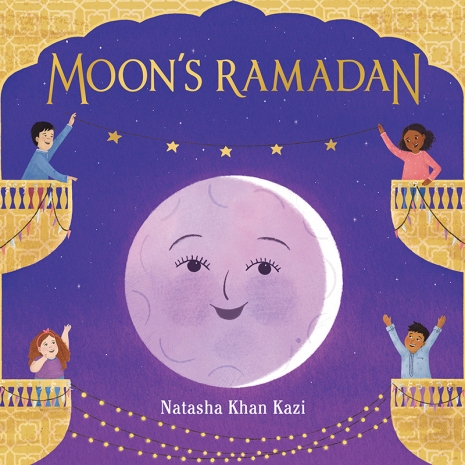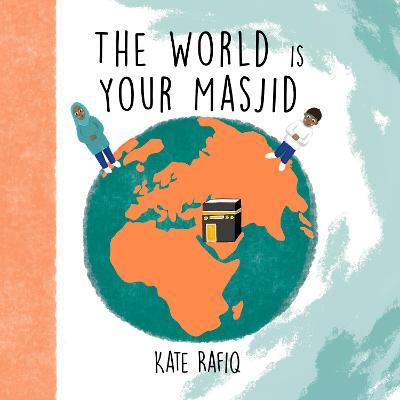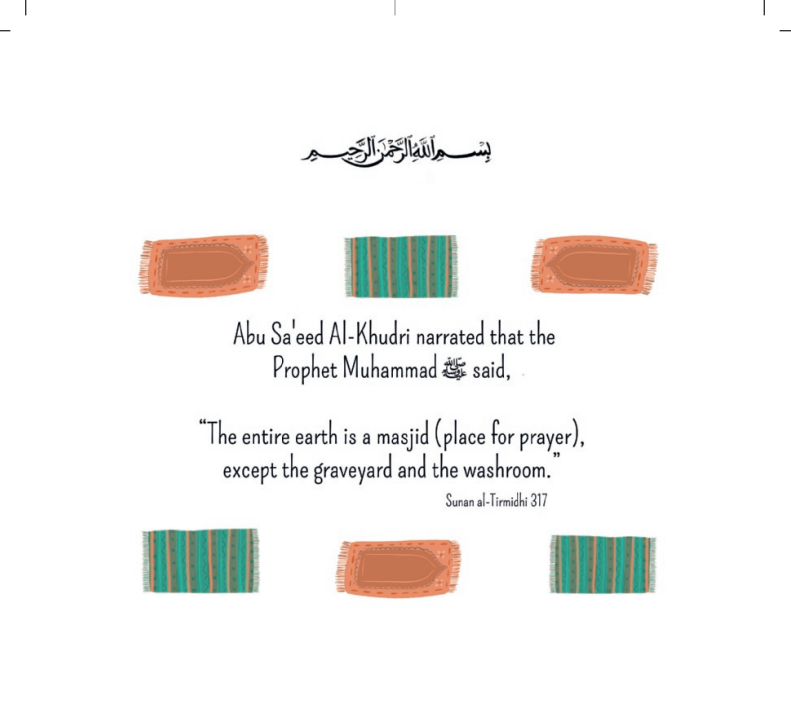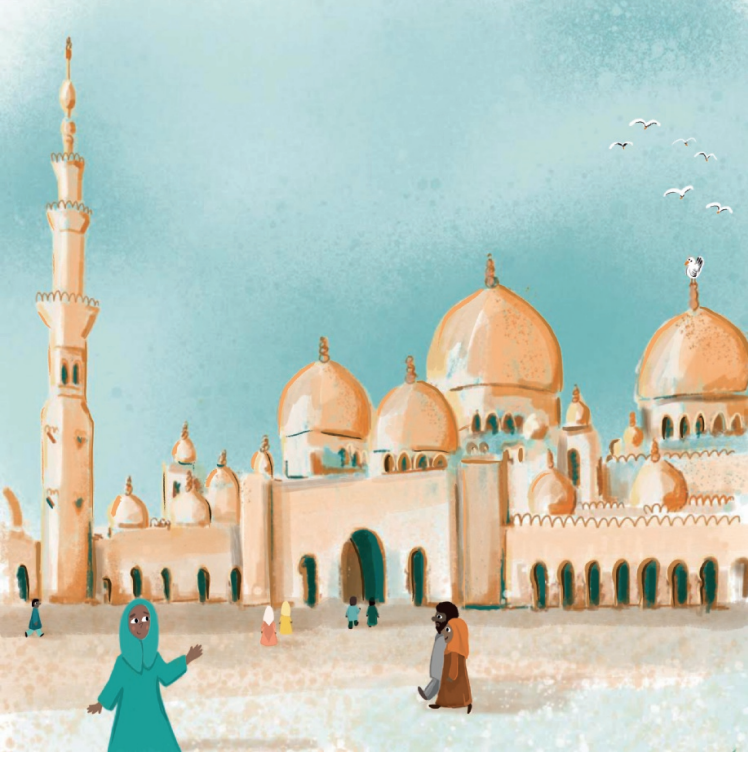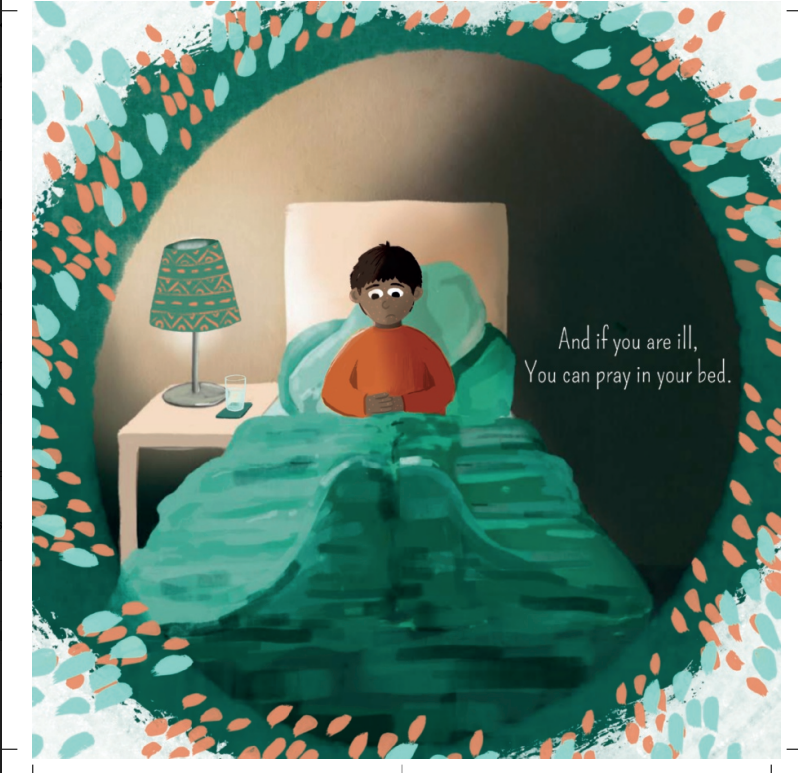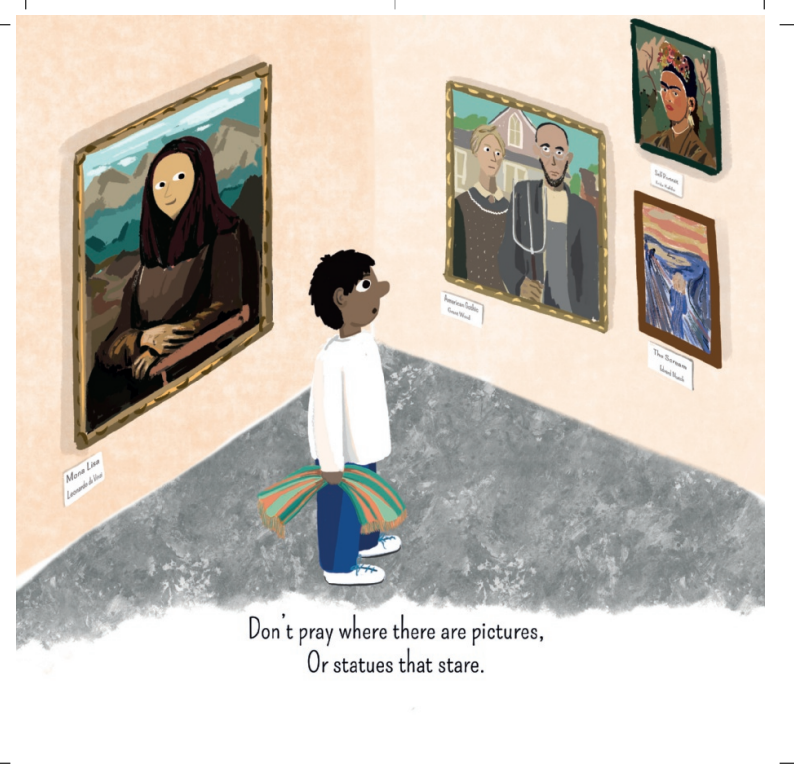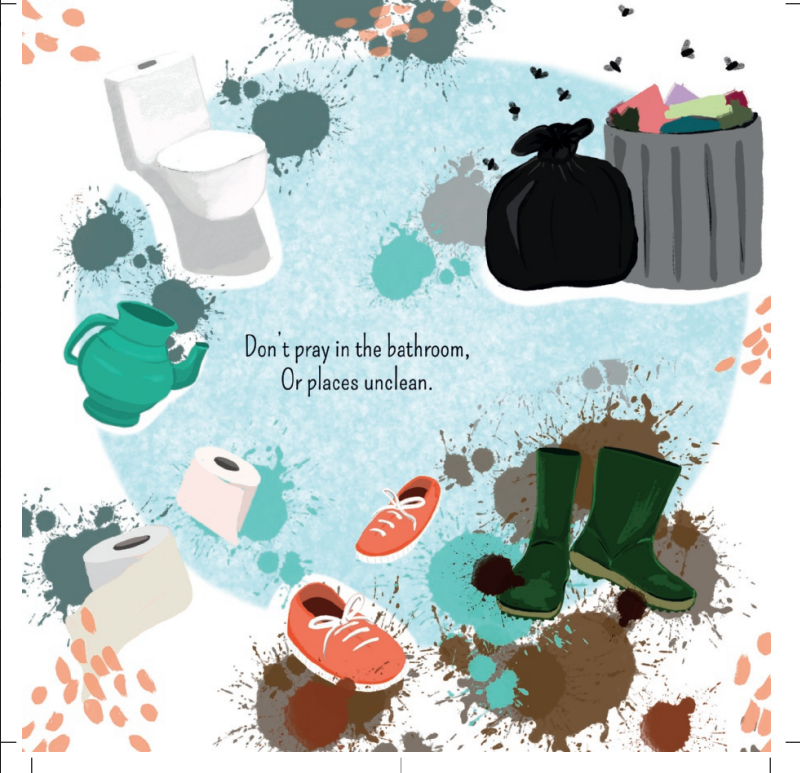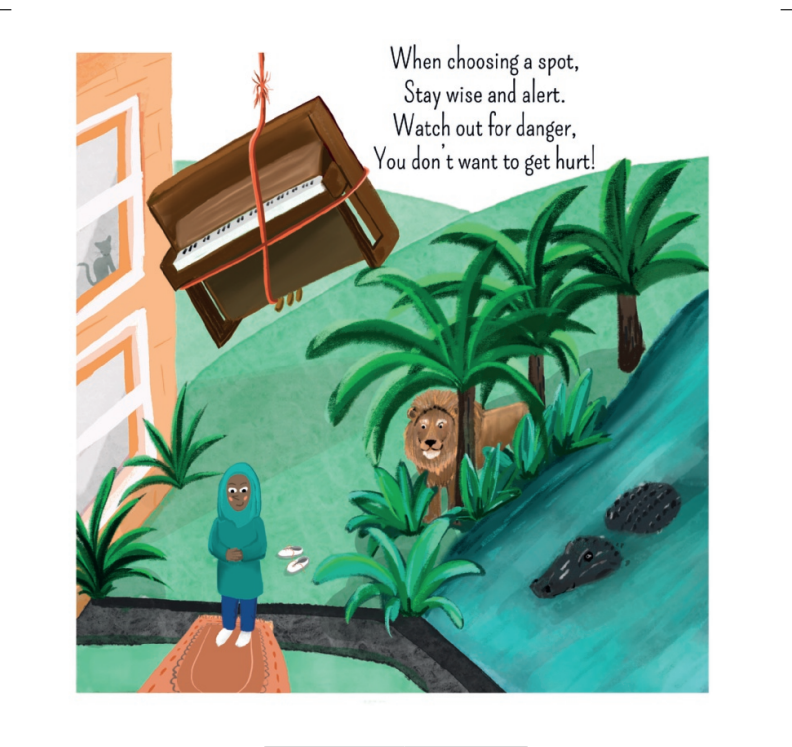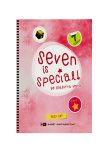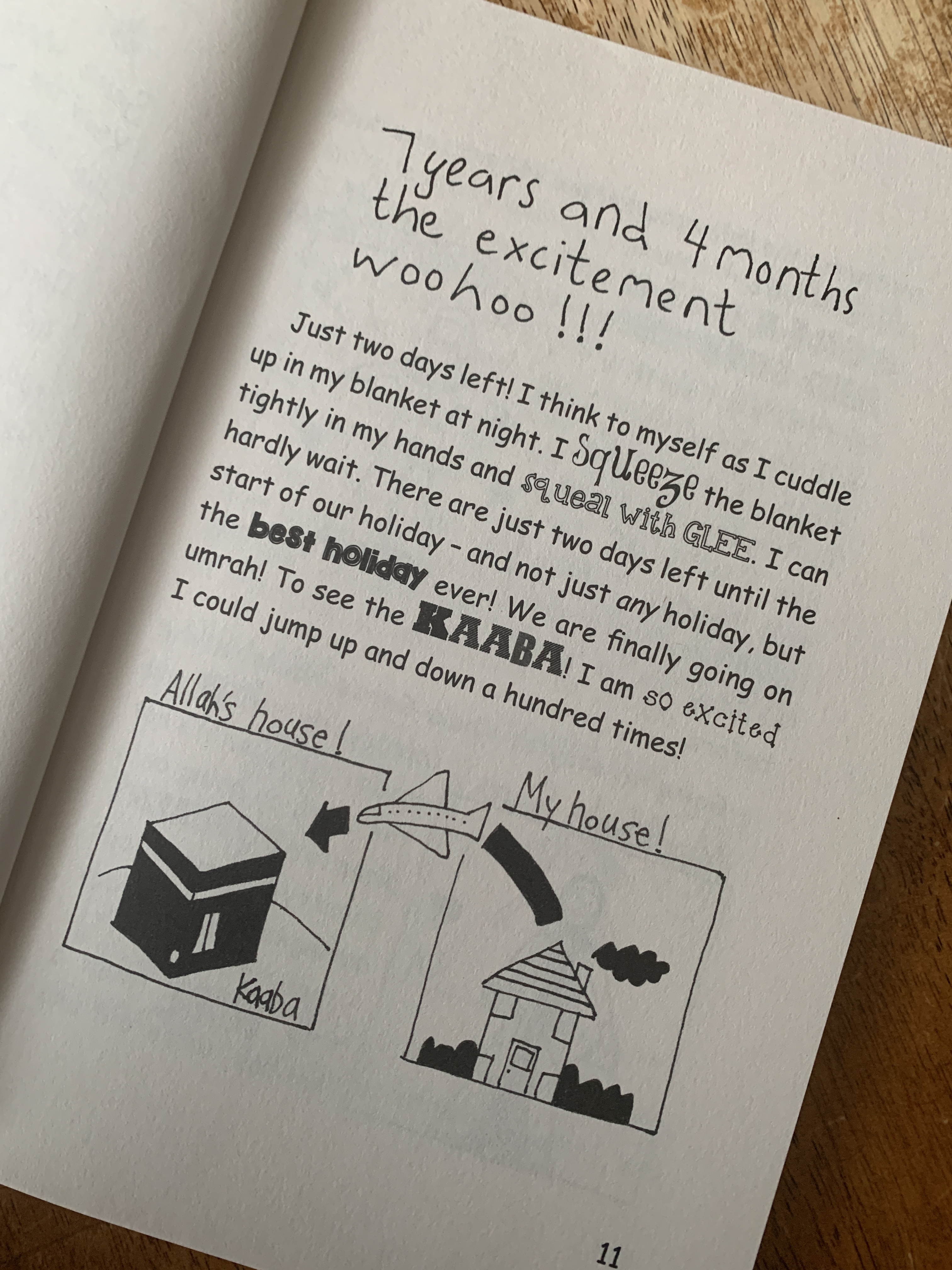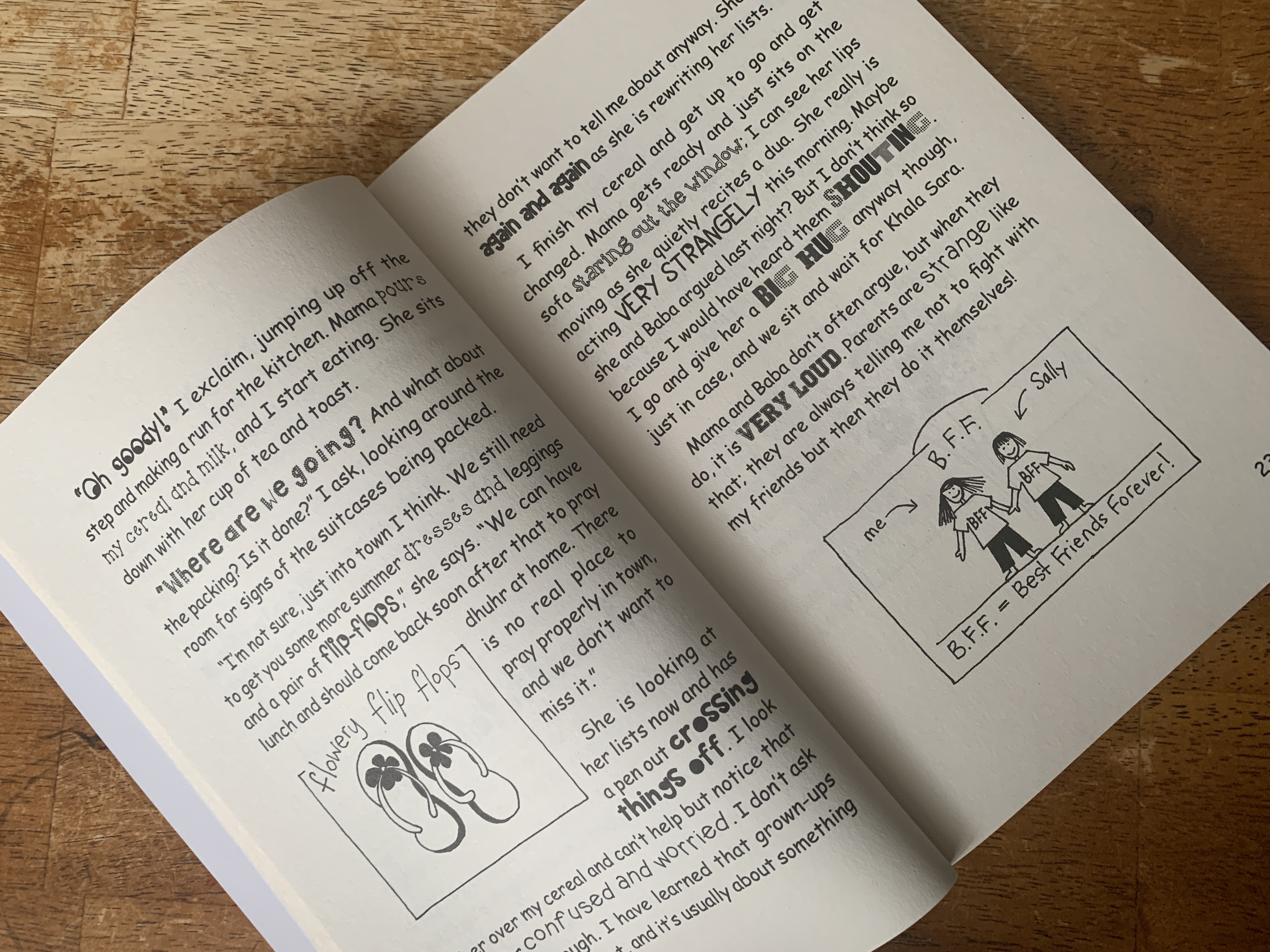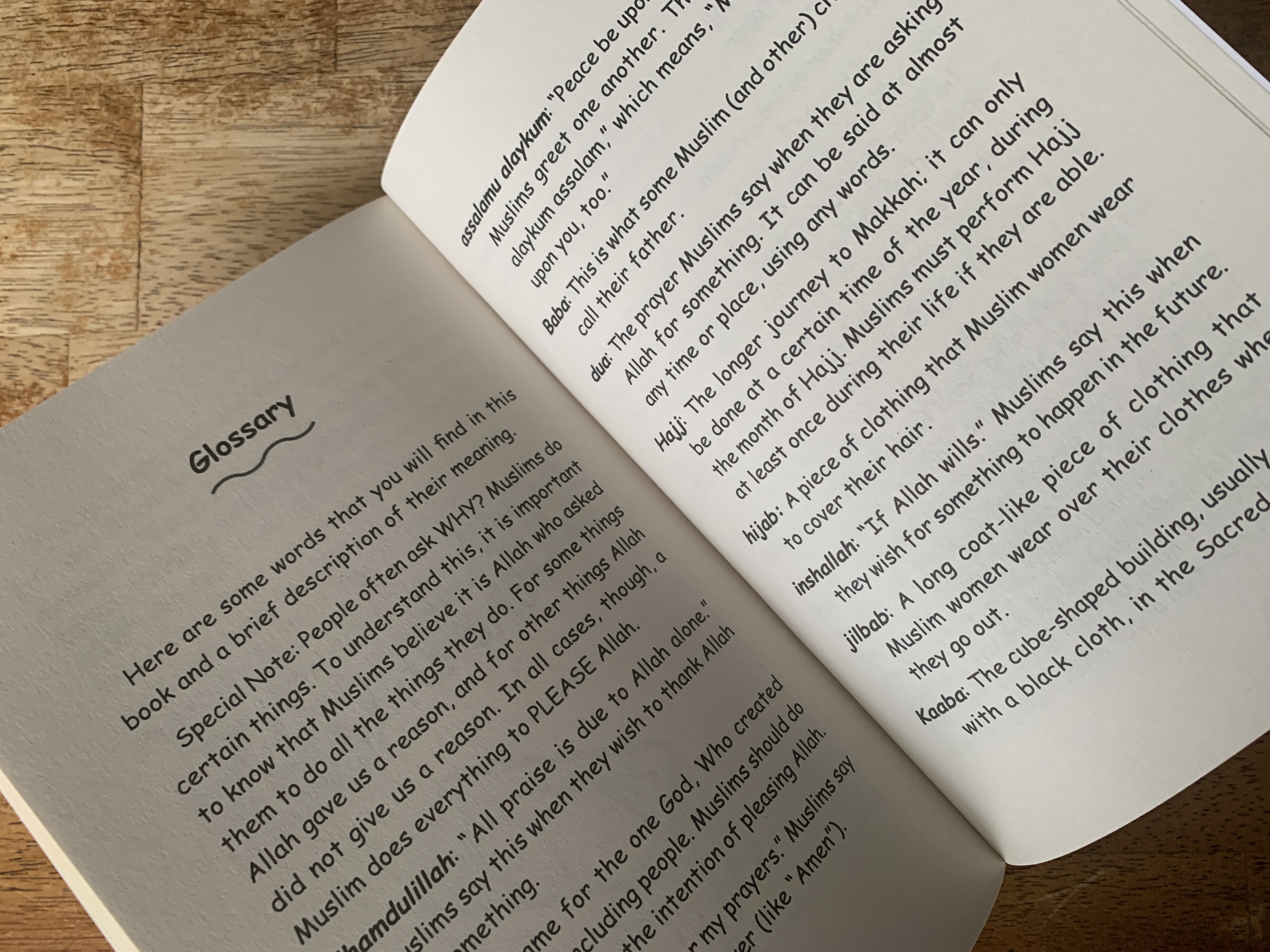
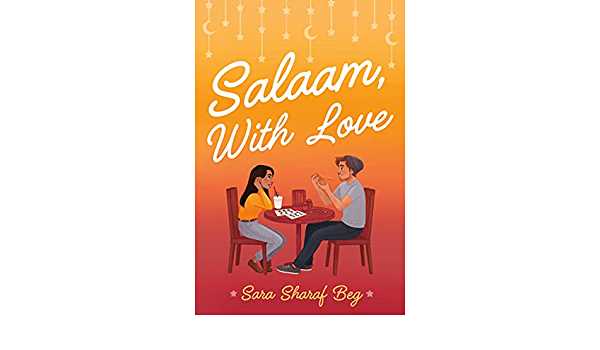
This 288 page YA contemporary Islamic romcom is very Islamic centered, and the storyline provides some nice twists along the way. Unfortunately the writing is terrible. Not the storytelling or even grammar per se, but the contradictions, errors, underdeveloped characters, and the inconsistencies. Yes I read an uncorrected proof, but this book is a mainstream major publisher presented book coming out in a few weeks, and it is in desperate need of some attention. I really don’t think it is the author’s fault, it reads as if this was a manuscript that got shopped around and picked up and then never refined, polished, and made to sparkle. The only saving grace is that as terrible as it is literary wise, once the main character starts to get over her “internalized islamophobia” (thank you @bintyounus for bringing this concept to my attention), the book as a whole presents a lot of unapologetic specific Islamic content on every single page: how Eid salat is different than normal salat, the beauty of tajweed, the meanings of so many duas and surahs said regularly, the list goes on and on and doesn’t just cover the basics. The flip side is that the characters are in a band that performs Islamic songs, but with instruments and everyone is fine with it, there are artists in the book drawing faces and portraits hang on walls, it is a romance, but it at most an arm or hand is touched and when tropes about Desi college choices are pushed back on the parents break the stereotype and relent. There are threads of cultural-ism within Islam, Islamophobia and a violent near death experience, but the book is very clean and honestly has a lot of potential, I have no idea why it is so sloppy. SO SLOPPY, and I took notes, so buckle up.
SYNOPSIS:
Seventeen year old Dua is an only child and her doctor father and caterer mom are the only Pakistani and only Muslims in their small Virginia town. They decide for Ramadan that they are all going to go and stay with family in Queens, New York for the whole month. They have given Dua less than 48 hours notice to plan to spend the end of her summer with cousins she hasn’t seen in five years. The parents hope that Dua will benefit from being around family, being closer to other Muslims in the month, and enjoy the cultural environment. Dua is not excited, but when bear hugs and genuine smiles meet her at the door, she is sucked in to a bustling house and the happiness and drama that is bound to unfold. Sharing a room with her older, law school bound cousin Mahnoor is by far the hardest relationship to cultivate. Newly engaged, Mahnoor is quiet, reserved and deeply unhappy. Dua makes little progress, but with Ramadan starting and her cousins setting goals for the month, Dua is determined to do better in all aspects of her life. As she gets close to Mahnoor’s best friend, Haya, she also gets closer to Haya’s brother Hassan. It is Ramadan though, and she isn’t good around boys, but Hassan is a hafiz and is helping her reach her memorization goals for the month, Hassan is also in a band and needs Dua’s help. When Mahnoor’s engagement is called off to Haya and Hassan’s brother, everything comes to a standstill between the families, but when a cousin is shot, the families come back together to support one another and deal with their decisions and their outcomes. By the end of Ramadan, every character has changed and grown and is sad the month is over and that Dua and her family are leaving.
WHY I LIKE IT:
Suffice it to say I love how Islam centered it is. I honestly checked the publishing information because of how much Islamic content is included, also for the amount of errors. The book did not start off well for me with Dua trying to separate herself from her “religious” cousins. The ones who practice communally and wear hijab. She was not like “them” and the dichotomy of measuring religiosity as acceptable or not, too much or too little, enrages me. It sets up that she practices Islam but in a relaxed manner and has been taught by her parents, and it is who she is, but it isn’t a huge part of her life. As the story progresses, it seems that she just doesn’t know a ton of surahs, she actually is pretty religious, and devout, it is very awkward and not presented clearly, which is why I attributed it more to her being in denial or embarrassed by her identity, not about her level of belief. Dua is also not like-able, she is incredible privileged and arrogant commenting on the size of houses and rooms, and her shoes. About half way through she starts to comes across as clumsy, not sure then why is she always wearing heels. Ultimately she is just not well-developed and often reads like an annoying helpless child. The framing of Dua being a musician and not being so religious is quickly questioned as she gifts her cousins music paraphernalia, and looks at portraits on their walls. If most are like me, and both families are praying, fasting, reading Quran, active musicians and artists and ok with hanging pictures, one would assume they are pretty in-syc with one another on their religious views and in practice.
Dua is not the only character that is poorly voiced, fractured, and inconsistent. Her parents are so unrealistic and awkward in the beginning I physically cringed reading them telling her their reasons for going to New York. In the car on the way, they even quiz Dua on her cousins names. She hasn’t seen them in five years, she isn’t a toddler, she should know their names, she has clearly purchased incredibly personalized gifts for them, and is filled with detailed memories of when they all met up in Pakistan together, the whole scene is pointless. One of the cousins, Ibrahim, is blind and Dua says that a few years ago her parents had to explain to her what it meant to be blind. Seriously? I get the learning how to let him take the lead and how to interact, but you as a teenager didn’t know what it means to be blind? When you met him in Pakistan you didn’t know he was blind? The four year old cousin is cute and adorable, and has the vocabulary and mannerisms of a seven or eight year old at times, most times. The 12 year old cousin has the wisdom of an old uncle and why do none of the adults in the book seem to work? The book probably should have started at chapter five, it seems the book hits a bit of a stride that at least makes it readable.
A huge plot of the book is the band, Sheikh, Rattle, and Roll, but the details about it are terrible. Mahnoor is walking out the door and her mom tells her to take Dua. The reader doesn’t know where they are going, but Mahnoor reluctantly agrees and they head out on the subway. Mahnoor constantly is telling Dua to hurry so they aren’t late and miss it, when they arrive, the band performs one song and that is when Hassan and Dua and Haya all meet. But the other two band members are her cousins, she is staying in their house. What? Rabia is constantly talking, that is her character quirk, how does Dua not know that they are performing? Not know they are in a band? No way would it not be mentioned. And why only one song? That is so random. At the end when they perform again on Eid, it is a concert, it is again only one song. A concert is not one song. Do they not practice or load up equipment, how is all this going on in one house and Dua is so clueless?
The inconsistencies are aplenty. A few examples: it says her cousin doesn’t wear make-up, a few chapters later has a whole face of make-up, on Eid she even does Dua’s make-up. When they all are sitting down to write their lists of plans for Ramadan it says they don’t have to share their lists. Yet a few lines later Dua is singled out in a very creepy way to share hers. In a single paragraph it says that at home she prays fajr half asleep, or late and in a rush before school, but concludes the description by complaining that praying in congregation is more difficult for her to focus in. Huh? praying while half asleep or in a rush gives you more focus than praying in jammah? Even non Muslims are going to be scratching their heads. At one point as Dua is trying to figure out what she wants to study and if she wants to start an MSA in her high school, since she is the only Muslim, she internally discusses how she wants to prove herself to her parents. Then when she decides what she wants to do for her, she remarks that she isn’t just doing it to prove to her parents, but because she wants it for her. The only problem is, no where have we seen or has it been established that her parents are requiring this proof.
There are odd errors as well. The athan on a phone goes off, the Uncle reaches in to his pocket for his phone and turns off his iPad. That is a big pocket indeed. Dua gifts Hassan a CD, really a CD? What is this 1999? Who gifts CDs in 2021? Dua starts playing a keyboard in someone elses house and no one mentions it other than the two people with her, how big is the house that you can’t hear it? The Uncle gets upset that Dua doesn’t pray Asr right at time, but a lot of people prefer Asr specifically to be prayed later within the time frame. In a two chapter frame it mentions letting out a breath she didn’t realize she was holding three times, word for word the same.
I was genuinely surprised that music being questionable was not brought up at all, two of the bandmates are huffaz. The author lets her own qualifiers slip in, perhaps her own desire to not take a stand that could seem alienating. She says, “allegedly” the time right before iftar is the best time to make dua. As Dua tries to figure out what is going on with Hassan she often remarks how it is hard or confusing “especially because he is Muslim.” Would a relationship with a non Muslim be ok, less hard, more hard? There is no lowering of any gazes, which for as religious as everyone in the book is, should have at least been mentioned even if not adhered to. The book puts on odd stress on tasbeehs and kufis, not sure why.
I do like the genuine love the characters have for Islam, Allah, Ramadan, salat. It is so much a part of every thing they do, and it is lovely. I also love Dua’s friend in Virginia, Kat, she is fasting in solidarity and wants to join the MSA even though she isn’t Muslim, but a seemingly amazing friend.
FLAGS:
The on-gain-off-again engaged couple do touch hands at Eid prayer. Hassan touches Duas arm when she is perceived as helpless. There are anti Islam protests and an angry man shoots Adam.
TOOLS FOR LEADING THE DISCUSSION:
If the sloppiness gets resolved, the book could be used as a high school book club choice. Those girls love them some halal romance, and this book is incredibly religious and clean.
